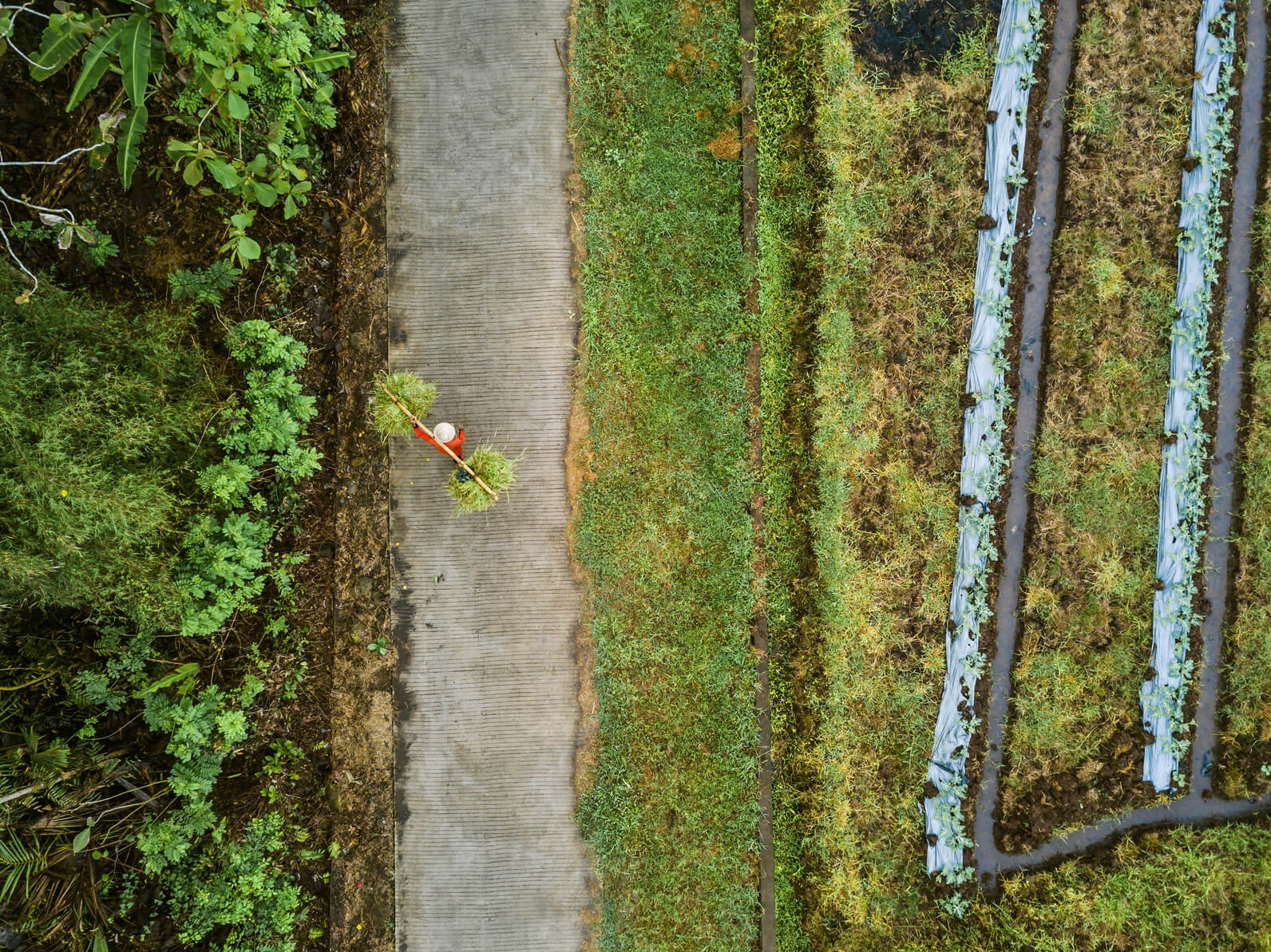scroll

Half of the world’s agricultural land is degraded. The recent decline in soil health has drained our food of nutrients, compromised the resilience of our economies, and affected human health – all while releasing 133 billion tons of soil carbon into the atmosphere.
Soil health refers to “the continued capacity of soil to function as a vital living ecosystem that sustains plants, animals, and humans.” Restoring it is paramount for our well-being, economies, and future.
Grocery stores showcase a rainbow of fresh produce, but this colorful facade conceals a troubling decline in the nutrient density of our food.
Numerous studies have documented a decrease in essential nutrients found in fruits, vegetables, grains, milks, and meats over the past 50-70 years. These dietary staples now lack protein, minerals, vitamins, and phytonutrients. “What our grandparents ate was healthier than what we’re eating today,” cautions Professor Kristie Ebi, an expert in climate change and health at the University of Washington.
This problem stems from modern industrial agriculture, which prioritizes yield and appearance over soil health and nutrition. Practices such as monocropping and intensive tilling strip soils of organic matter and micronutrients, the building blocks for nutrient-dense food.
Increasing evidence shows that many crops diminish in nutritional value as CO2 levels rise. One recent study showcased that elevated CO2 levels cause rice to have lower levels of protein, iron, and zinc.
The decline in nutrients carries a surprisingly overlooked consequence: flavor. “Nutrition equals taste,” says Tina Owens, a senior fellow at the Nutrient Density Alliance. A bland tomato isn’t just unappealing; it’s a sign of lost health-protective compounds that impart satisfying flavors to our foods.
Healthy soil is more than an ecological asset; it’s an economic one, with outsized impacts on international trade dynamics, GDP, food security, climate resilience, and farmer livelihood.
At the farm level, prioritizing soil health increases income, productivity, and reliability. According to a recent report by Boston Consulting Group, practices that regenerate soil can boost farmers’ income by 120% within 3-5 years by enhancing crop yield and climate resilience.
Globally, soil vitality shapes trade balances, positioning nations on the competitive map of international commerce. Agriculture generates $10 trillion per year, over 12% of global GDP, and is a source of employment for over 40% of the global workforce. Take coffee, for instance, a top agricultural export in many developing countries. In Central America alone, 1.2 million livelihoods are directly tied to the coffee sector. Enhancing soil health can fortify their resilience and economic stability.
As President Franklin D. Roosevelt stated in 1937, “The nation that destroys its soil destroys itself.”
One teaspoon of soil contains more living organisms than there are people on Earth.
Microbes transport and store 13 billion metric tons of carbon deep within the soil each year, equivalent to one-third of global fossil fuel emissions. From bacteria to fungi, these unsung heroes build a resilient food supply by improving water infiltration, controlling pests and diseases, and enhancing plant growth.
However, a cocktail of agricultural insecticides, herbicides and fungicide is wreaking havoc on microbes. The impact is vast: biodiversity loss, increased erosion, weakened crop resilience, and diminished soil carbon sequestration. Pesticides linger in the soil for years, harming not only the soil but also contaminating groundwater and other ecosystems. Not all pesticides are inherently harmful, but their long-term negative effects most often overshadow short-term benefits.
The impact of pesticides on human health is a subject of significant concern and study.
Designed to protect crops from pests and diseases, these chemicals can cause acute symptoms like headaches and dizziness with short-term exposure, and more severe health issues such as cancer, neurological, reproductive, and hormonal disorders over the long term. Their environmental persistence may result in bioaccumulation, heightening exposure risks through the food chain. Regulatory bodies enforce strict guidelines on pesticide use to mitigate these risks, emphasizing the need for sustainable farming practices that minimize reliance on pesticides.
Soil health is intrinsically linked to human and environmental well-being. Regenerative practices—such as minimal tillage, cover crops, and rotational grazing—restore soil health. As soil health increases, so does the amount of carbon stored in soil. Through carbon credits, landowners are financially rewarded for adopting these ecosystem-restoring practices, paving the way for sustainable agriculture that benefits the planet and its inhabitants alike.
Boomitra works with over 150,000 farmers and ranchers across twelve countries in the Global South to restore soil health through regenerative practices. Utilizing satellite and AI technology, Boomitra measures the subsequent rise in soil carbon levels and issues third-party verified carbon removal credits. Our projects will channel an estimated $200 million in carbon finance to farmers and ranchers by 2025.
Discover how investing in soil health aligns with your corporate sustainability goals, or explore a partnership to drive regeneration.



